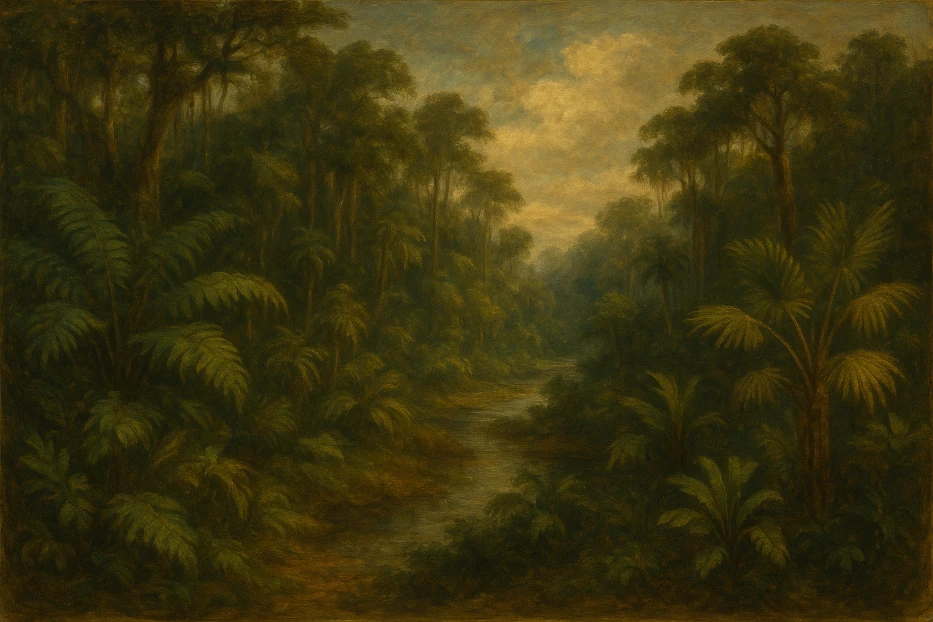As Asia’s largest island and the third-largest in the world, Borneo is a giant in more ways than one.
You’ll find Borneo in Southeast Asia, divided among three countries: Indonesia, Malaysia, and Brunei. Indonesia owns most of the land, calling it Kalimantan, while Malaysia controls the northern states of Sabah and Sarawak. The tiny but wealthy country of Brunei sits along the northern coast. This mix of nations has shaped Borneo’s rich blend of languages, traditions, and beliefs.
Table of Contents
A Land of Mountains and Rivers
Covering over 748,000 square kilometers (nearly 290,000 square miles), Borneo is a place of astonishing landscapes. Its equatorial location means it stays hot and humid all year, with lush rainforests and frequent downpours that feed countless rivers.
Mount Kinabalu, Borneo’s most famous landmark, towers 4,095 meters (13,435 feet) over Sabah. It’s the tallest mountain in Southeast Asia and draws hikers from around the world. The surrounding Kinabalu Park is a UNESCO World Heritage Site and a haven for rare plants and animals.
The island’s rivers have always been lifelines. The Kapuas River in Indonesian Kalimantan is over 1,100 kilometers (680 miles) long, while the Rajang River in Sarawak helps carry goods and people deep into the interior. For many communities, boats are still the main way to travel.
Borneo Wildlife
Borneo is one of the most biodiverse places on Earth. Its rainforests are more than 140 million years old, home to thousands of plants and animals you won’t see anywhere else. Scientists estimate there are about 15,000 plant species and 1,400 types of vertebrate animals living here.

Some of Borneo’s most iconic creatures include:
- Bornean orangutans, critically endangered great apes that help keep the forests alive by spreading seeds.
- Pygmy elephants, the world’s smallest elephants, which roam the lowland jungles of Sabah.
- Proboscis monkeys, with their comical long noses and potbellies, often seen near rivers and mangroves.
- Clouded leopards, mysterious spotted cats that hunt in the treetops.
The island also boasts giant flowers like the Rafflesia, which can grow over a meter wide, and carnivorous pitcher plants that trap insects.
Borneo Ethnic Groups
Asia’s largest island is home to over 200 indigenous ethnic groups, collectively called the Dayak people. Many still live in traditional longhouses—huge wooden buildings where dozens of families share space under one roof. Their cultures are rich in legends, crafts, and ceremonies.
Besides the Dayak, Borneo has large Malay, Chinese, and Indian communities, creating a unique blend of faiths, festivals, and food. In Brunei, Islamic traditions are strongest, while Sabah and Sarawak feature more cultural diversity.
Best Things to Do on Asia’s Largest Island
Environmental Challenges
Sadly, Borneo’s forests are disappearing fast. Logging and palm oil plantations have cleared millions of hectares. Between the 1970s and 2015, about 30% of the island’s forests were lost. Mining and road construction also take a toll, harming wildlife and the people who rely on natural resources.
Protecting a Global Wonder
To save what remains, governments and organizations have launched conservation programs. The Heart of Borneo Initiative, started in 2007, aims to protect the forests at the island’s core. Reserves like Danum Valley and Gunung Mulu National Park shelter endangered species. Centers such as the Sepilok Orangutan Rehabilitation Centre rescue and release animals affected by habitat loss.
Eco-tourism is becoming an important way to support conservation and local communities. Visitors can spot wildlife along the Kinabatangan River or dive among sea turtles off Sipadan Island.
How to Reach Borneo
Getting to Borneo can be an exciting journey, and while flights are the most common method, there are also ferry options for a more adventurous approach. By air, major international airports such as Kota Kinabalu (Sabah, Malaysia), Kuching (Sarawak, Malaysia), and Balikpapan (East Kalimantan, Indonesia) connect Borneo to many Asian cities, including Kuala Lumpur, Singapore, and Jakarta.
For those opting for a sea route, ferries are available from neighboring countries. From Malaysia, ferries operate between Labuan Island and Kota Kinabalu or Brunei. Similarly, travelers from Indonesia can take ferries to destinations like Pontianak or Nunukan from mainland ports.
While ferry schedules may vary, this option offers a scenic, leisurely way to arrive at Asia’s largest island, with opportunities to enjoy the surrounding islands along the way.

